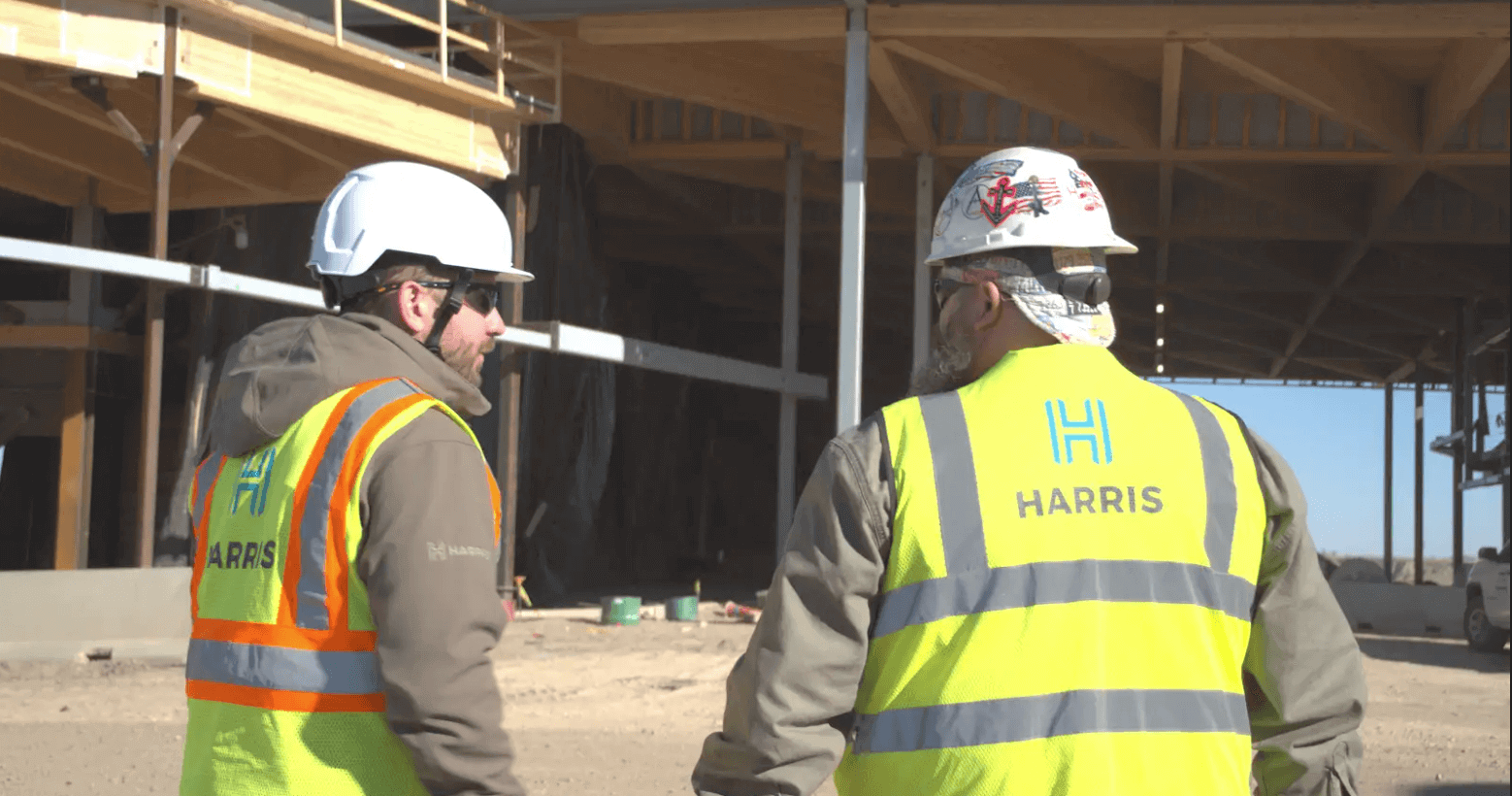
Inside the Sustainable Design of the Theodore Roosevelt Presidential Library
Author: Jon Hegge, Senior Manager, Business Development + Preconstruction
Harris was thrilled to be selected as the mechanical contractor for the Theodore Roosevelt Presidential Library, a complex and ambitious project with aspirations to achieve the Living Certification under the Living Building Challenge (LBC).
It is being constructed at a site in Medora, North Dakota, near Theodore Roosevelt National Park. The museum will feature exhibits focusing on the life and legacy of Roosevelt, the 26th president of the United States.
The project is currently about 70% finished, but we knew as soon as we signed on that a major goal was to show what a high-performance, sustainable building can be when the proper resources and planning are devoted to it.
Our experience with green building projects, including LEED-certified developments, positioned us well for this opportunity. The project involves a highly complex mechanical system, with robust submittals, management and record-keeping requirements.
With buildings responsible for a significant share of global carbon emissions, the way we design and construct them today will have lasting impacts for decades to come.
Our team was involved early in the design-assist phase, which allowed us to help tackle constructability challenges, track the budget and plan for all aspects of construction, including prefabrication, schedule management, start-up and commissioning.
The project has tasked us with ensuring the systems perform efficiently while meeting the rigorous sustainability standards required for the Living Certification.
Heating and Cooling Systems
We are installing air handling units with air-side energy recovery, which minimizes energy waste by reusing exhaust air to precondition incoming air. The heating and cooling are powered by a traditional vertical well geothermal system, consisting of 220 wells, each 300 feet deep, which provides a renewable energy source.
We are also integrating water source heat pumps that extract heat from the geothermal system for heating purposes, while cooling is achieved through a chilled water system supplied by a magnetic bearing centrifugal chiller. This system also features a water-side economizer function, utilizing energy from the geothermal system to enhance efficiency.
For precise temperature control, we have employed chilled beams for sensible heating and cooling, as well as water-to-air heat pumps, with heat rejection through the geothermal system.
These integrated systems demonstrate our commitment to sustainable building practices, reducing reliance on fossil fuels and lowering greenhouse gas emissions. By prioritizing energy efficiency, this approach supports long-term environmental stewardship and operational cost savings.
Radiant Heating and Cooling
To further reduce energy consumption and improve comfort, we’re incorporating radiant in-floor heating and cooling systems. These systems allow for more efficient temperature regulation throughout the building, ensuring both energy savings and a comfortable environment for all occupants.
Radiant systems operate at lower temperatures compared to traditional forced-air systems, making them an ideal match for low-temperature heat sources like geothermal. They also reduce air movement, improving indoor air quality and minimizing the spread of airborne contaminants, which is especially important in shared public spaces like museums.
The commercial kitchen in the library requires special attention to pollution control. We have installed a comprehensive pollution control system to scrub all grease, odors, and particulates from the kitchen exhaust. Makeup air is provided by a heat pump unit that rejects heat back into the geothermal system, contributing to the building’s overall energy efficiency.
These measures ensure that even high-demand areas like the kitchen support the project’s broader sustainability goals, demonstrating how energy-conscious design can be seamlessly incorporated into complex operational spaces.
Plumbing Innovations
In line with the library’s sustainability goals, we’re implementing an on-site wastewater treatment system that recycles and reuses wastewater for toilet flushing and irrigation, reducing the building’s reliance on municipal water. This approach supports water conservation efforts and aligns with LEED and other green building standards.
We’re also installing WaterSense-certified flush valves that utilize self-powered hydroelectric regeneration, which not only saves water but also generates small amounts of energy during use, eliminating the need for hardwiring or battery replacement and reducing maintenance demands.
These high-efficiency fixtures contribute to long-term water savings without compromising performance.
Additionally, the heat pump hot water heater, which extracts heat from the geothermal system, ensures that hot water is delivered efficiently and sustainably. By leveraging renewable energy for domestic hot water needs, the system further reduces the building’s carbon footprint and operational costs.
Together, these plumbing innovations showcase how smart infrastructure can meet everyday demands while advancing broader sustainability goals.
Sustainable Procurement and Waste Management
The commitment to sustainability extends beyond just the systems we’re installing. All materials and equipment used in the project are required to meet strict sustainability standards, with documentation provided for each item to ensure minimal use of Red List materials.
On-site, we adhere to a strict waste management protocol, utilizing separate dumpsters for plastic, metal, wood and trash, ensuring that all construction spoils were separated and properly recycled.
Conclusion
The Theodore Roosevelt Presidential Library project represents more than just a remarkable architectural achievement, it’s a blueprint for what’s possible for a large, sustainable building project.
At Harris, we’re proud to be playing a central role in bringing this visionary project to life. Every element is being carefully considered to meet the ambitious standards of the Living Building Challenge.
Our team has embraced the complexity of the project with a deep understanding that the work we do today shapes the environment of tomorrow. We have been committed from day one to help deliver a building that not only meets rigorous sustainability goals but also provides long-term value for its occupants and community.
This project reaffirms our belief that sustainable construction is not only achievable but critically important, and as the industry continues to evolve, we are committed to leading the way.
Categories: Blog
